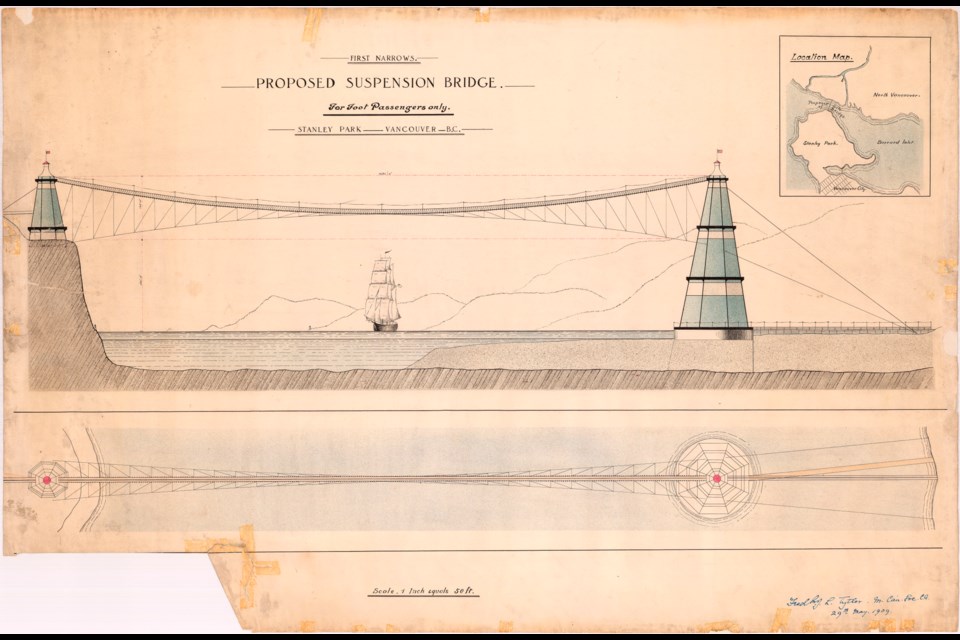Decades before the Lions Gate Bridge was built in the 1930s, another idea was put forth for people to get from Stanley Park to what is now North Vancouver: An absolutely massive suspension bridge, only for pedestrians.
The monumental bridge was a proposal put forth by Will Farrell (no, not the Hollywood comedian, this one has an 'a' in his name). In 1909 automobiles weren't as common as they would be a few years later. Horses and carriages were dominant, and walking longer distances was a part of the everyday routine.
If you needed to get directly from Vancouver to "primitive and barbarous" West Vancouver, you needed to take a ferry.
The proposed bridge would have been one of the biggest suspension bridges in the world with a single span running 1,280 feet, or about 390 metres. For comparison, the Capilano suspension bridge (which had been open for nearly 20 years at the time of Farrell's proposal) is about 450 feet (137 metres).
It would have been the third-longest suspension bridge in the world, according to an estimate mentioned in a news article at the time.
Not only was it going to be long, but also quite high. The drawings show towers on either side of the inlet with the beginning of the bridge (which is the highest point) 305 feet above the ground on the north side of the span. On the south side, it would have started about 125 feet above the ground before stretching out over a cliff and above the ocean water hundreds of feet below.
That's quite high for a pedestrian suspension bridge, but the entrance to the inlet, and therefore Vancouver's harbour, needs to be high to allow ships into port; it's why the Lions Gate is also quite high, as freighters and cruise ships pass under.
In Vancouver Province articles from the time, the bridge was proposed with some excitement in June 1909.
The bridge would have been made of 22.5-inch cables crossing the span with a network of other cables providing support and tension. It's estimated these cables would support 3,000 people on the bridge at a time - but only 500 would be allowed to cross at any given moment.
"An electric hoist will be used to transport passengers to and from the bridge besides the usual platform walk," states the article.
The proposed bridge was seen as a practical solution and a tourist attraction.
"It will not only be something original, but a structure that will be as ornamental as it will be useful," notes the unnamed reporter.
While Farrell promised things were all lined up to go ahead with the plan, at a park board meeting in July 1909, the board (which, it would seem, had veto rights over the bridge) didn't give unanimous support, which was needed for the project to move forward, and so it died.



